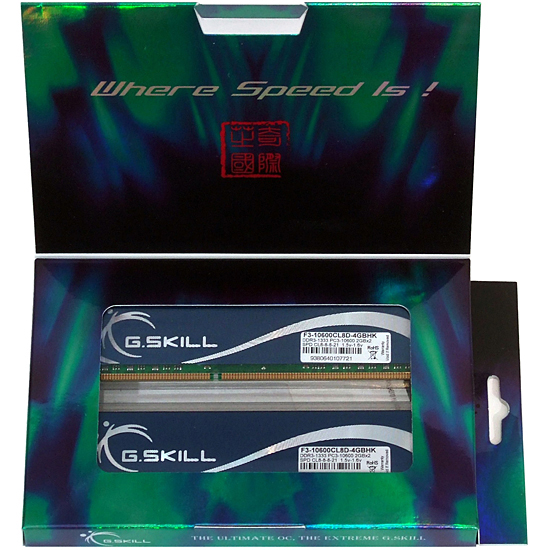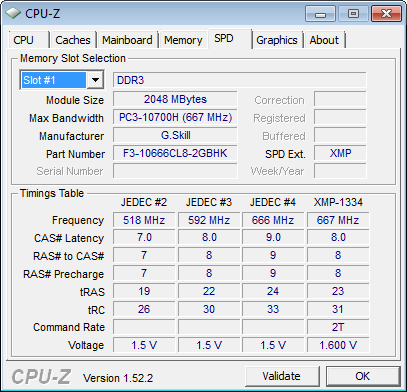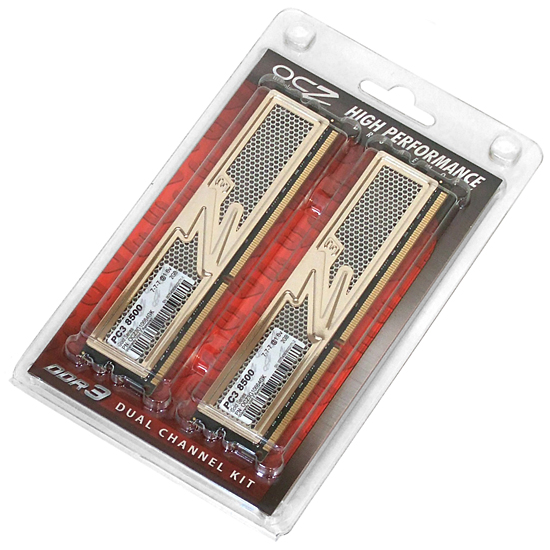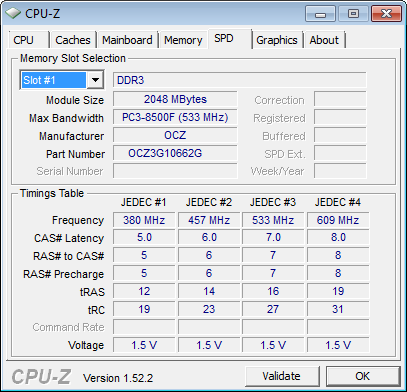Value DDR3 For Intel's P55: Six 4GB Kits Rounded Up
G.Skill And OCZ
G.Skill DDR3 CAS 8
A favorite among many value seekers in our community forums, G.Skill is the first company in today’s lineup to offer overclock-rated settings at a standard-component price.
Read Customer Reviews of G.Skill's 4GB DDR3-1333 CAS 8 Kit
The risks to G.Skill are minimal, since nearly any DDR3-1333 can use its rated CAS 8-8-8-21 latencies at 1.60V. But it’s nice to know that this part number F3-10600CL8D-4GBHK dual-channel kit is guaranteed to do so.
G.Skill even adds an XMP value for users who prefer to set the rated overclock by simply enabling a profile in BIOS, though CPU-Z detects the tRAS value as 23 cycles, rather than the rated 21.
OCZ Gold Series DDR3-1066 CAS 7
OCZ is the only company in today’s roundup to put its value focus on low latencies at lower data rates. While some so-called experts claim that certain systems yield better performance results from lower-latencies rather than from greater speeds, our calculator shows that DDR3-1066 CAS 7 and DDR3-1333 CAS 9 offer similar latency times.
Get Tom's Hardware's best news and in-depth reviews, straight to your inbox.
Read Customer Reviews of OCZ's 4GB DDR3-1066 CAS 7 Kit
Originally one of the least expensive of today’s retail samples, OCZ’s part number OCZ3G10664GK comes with perforated heat spreaders that shouldn’t have any negative impact, even if poorly applied, which these were not. We’re hoping to actually see some benefit from these heat spreaders in our overclocking evaluation.
Rated at DDR3-1066 and with 7-7-7-16 timings using 1.60V, OCZ programs its SPD values with the same speed and timings at 1.50V. This could cause the memory to be unstable at “motherboard defaults,” and OCZ buyers need to be aware of this potential programming issue, which can only be compensated for by a manual voltage increase. The purpose of SPD is to prevent this very problem, which is why most of OCZ’s competitors program slower default timings and require tuners to manually configure voltage and latency simultaneously.
-
presidenteody should i wait for the price to be cut in half in 6 months? I want it now for L4d2!Reply -
dirtmountain Would running these same kits work any differently in an AM3 system with it's ability to handle higher voltages?Reply -
MAD4AMD Could you please provide information what memory chips are used in all RAMs. Thank you!Reply -
micky_lund looks good, especially for CAS9. spose it makes it better for OCing.Reply
pity it ain't available in Australia :S -
jrharbort I've always insisted that Crucial DDR3 kits are an excellent value, and recommended them to friends for their amazing stability, overclockability, and price.Reply
These kits totally deserved the Tom's award for best hardware of '09. -
mlcloud I've been buying OCZ for all my DDR2 needs (they were very cheap after rebates), but I think I know who to go to for DDR3 (and awesome power supplies)Reply







